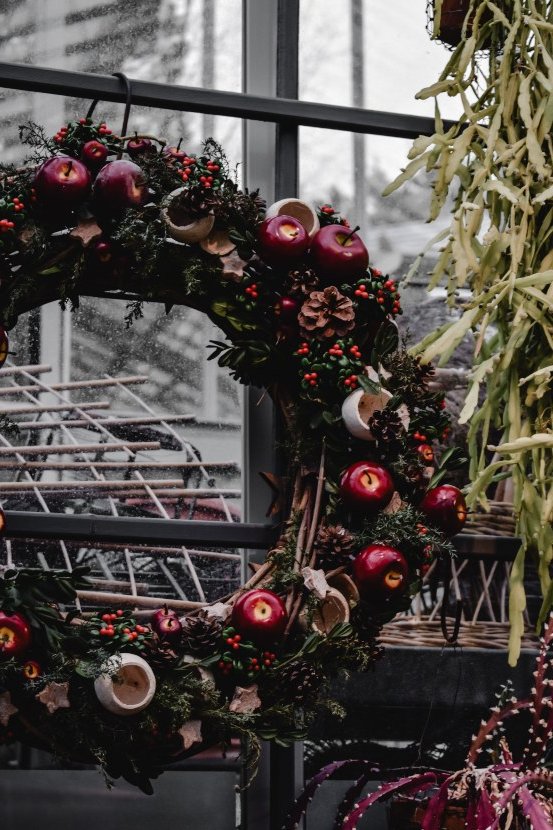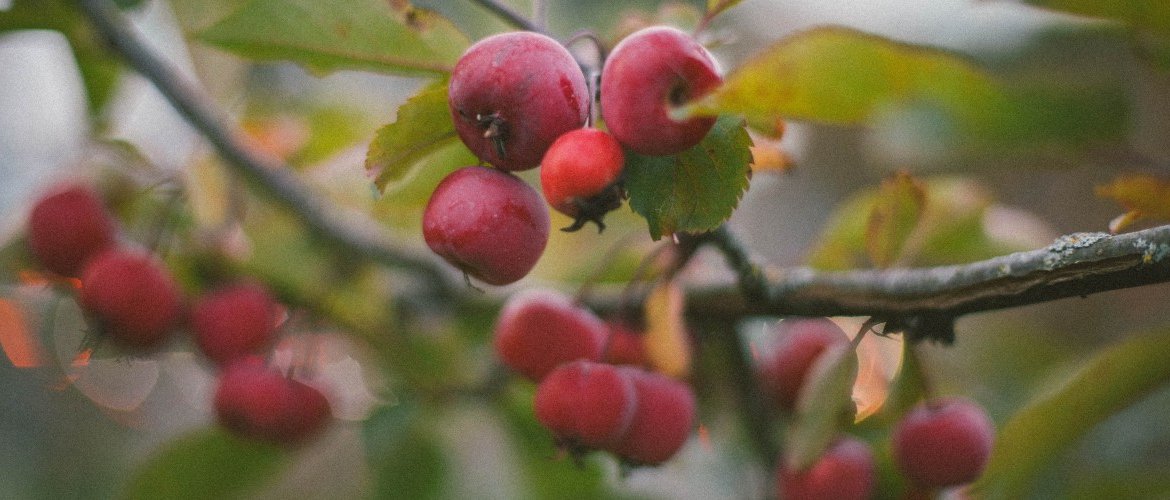Mistletoe: the most romantic Christmas plant
Christmas is back and with it the nougat, the carols, the lights and, of course, the mistletoe. This plant, which has accompanied on many occasions some of the most romantic scenes of the seventh art, has earned a place in Christmas decorations. Its presence is preceded by different legends, perhaps that is why it arouses some curiosity. Powers to attract love, happiness or fortune are just some of the charms attributed to it.
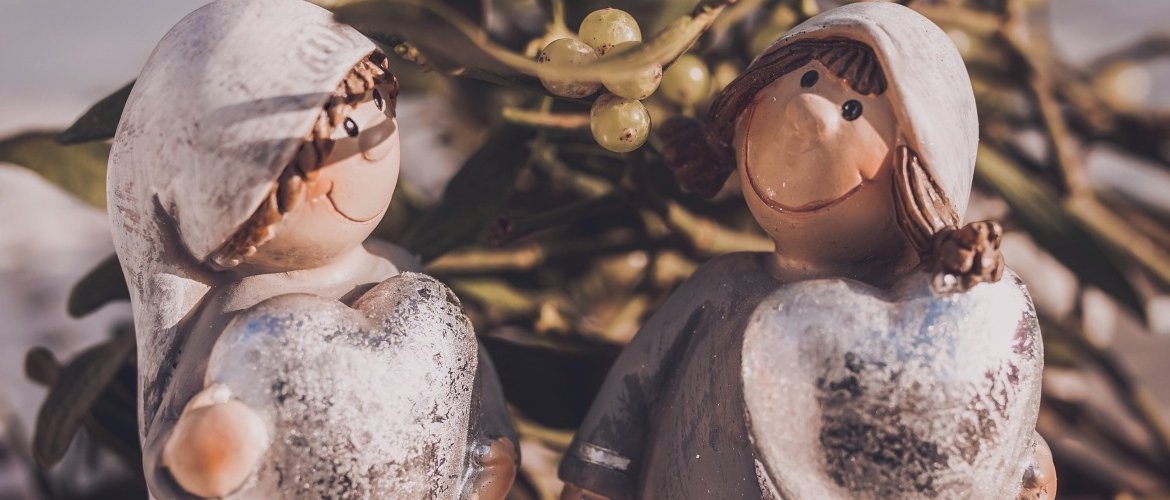
This plant is a symbol of Christmas in many countries, although the origin of one of the most romantic traditions of this time of the year is shrouded in all kinds of legends.
Whether or not we believe in these properties and ancestral traditions, the truth is that there are many who bet on this species as part of the natural decoration at this time of the year. Its versatility opens a universe of possibilities and is, along with the poinsettia or the traditional fir trees, one of the most representative species of Christmas.
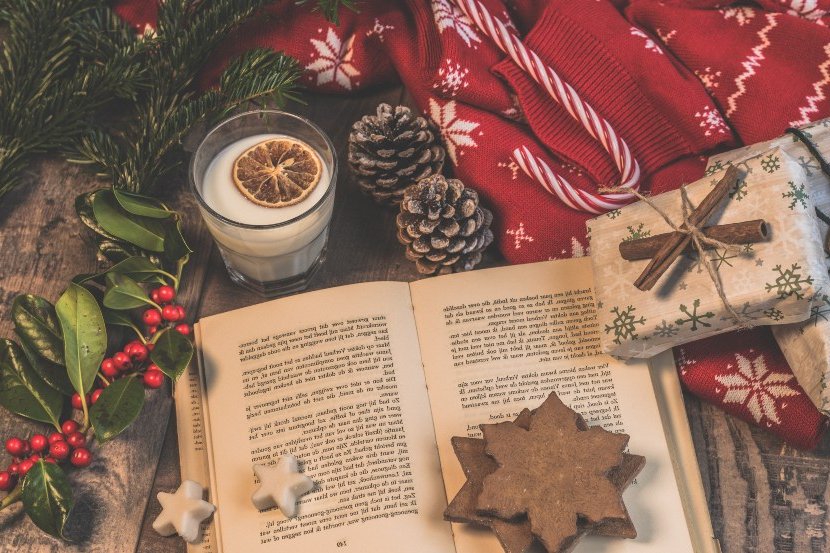
To speak of mistletoe is to evoke romanticism, especially at Christmas. However, it is a semi-parasitic plant native to certain areas of Europe, Western Asia and America. What does this mean? Basically, it develops between the branches and trunks of some deciduous trees such as poplars or certain fruit trees, as well as some pine trees.
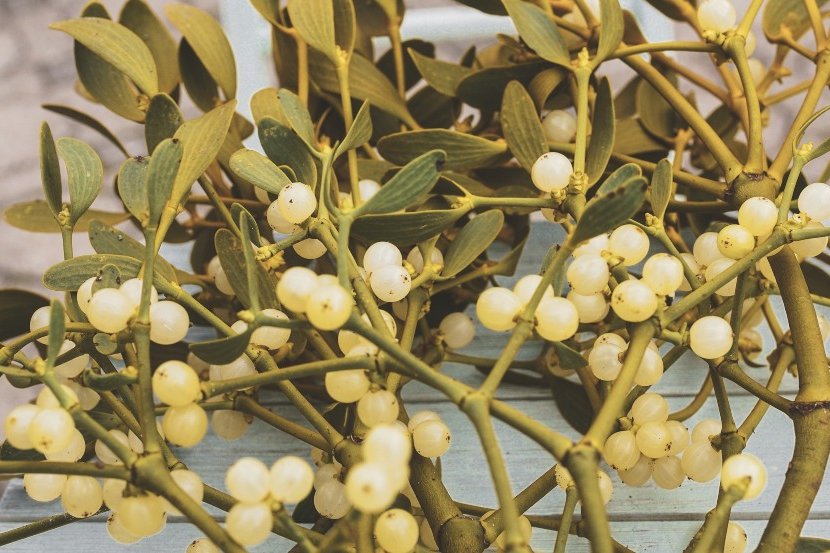
In addition to its location, its appearance is another of its hallmarks. This Christmas plant has intense light green leaves. However, it is its fruit that attracts the most attention. Similar to the white grape and shaped like berries, they start out green and later turn white or translucent.
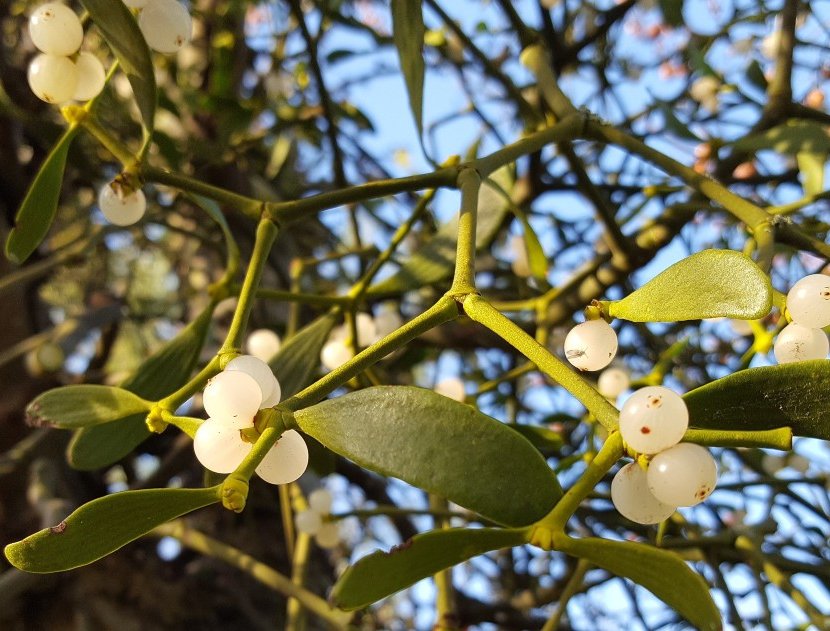
Today, mistletoe is known, among other things, as a remedy that can act as a natural analgesic, diuretic, vasodilator and even to combat collateral damage from cancer.
If its appearance is characteristic, the legends surrounding this plant with medicinal properties are no less so. The ancient Druids considered it a magical plant. Not only did it protect against evil or disease, but it also boosted the fertility of women. There were even those who attributed to it the power to make invisible the one who took its essence.
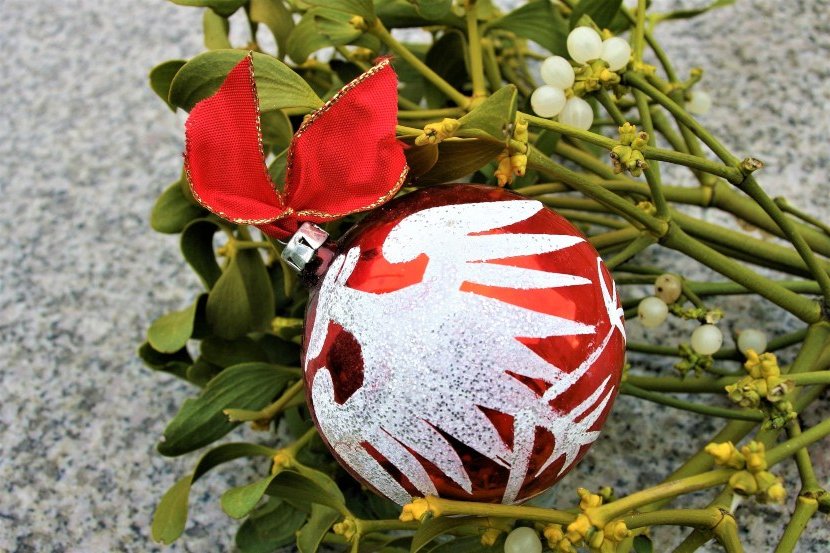
The Celts were the precursors of the legends surrounding mistletoe. But already in the 18th century, it was the Nordic Scandinavians who chiseled its most romantic aspect. Known for its healing and even soothing properties in times of battle, it was added to that potential for love known today.
According to tradition, anyone who kisses under the mistletoe at Christmas will have good luck in love, strengthen their relationship and even enjoy good fortune.

Tradition invites us to think of placing the mistletoe on the threshold of the door independently, thus promoting this "kissing moment". However, nothing prevents us from looking for more original solutions that do not detract in any way from the romantic character of the plant.
Integrating it as part of the design of the Christmas wreath on your front door will be quite a statement of intent, but there's more. Accompanying the balls as part of the tree decoration, in a centerpiece in the company of some pine cones, next to some candles with some holly.... Your imagination will set the limits!
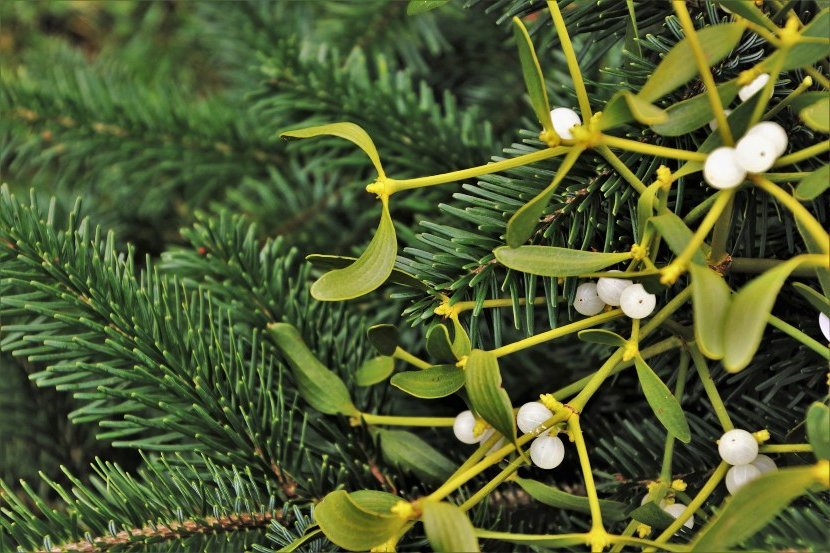
Although it has a character of its own, mistletoe is often confused with holly. However, both species have little in common in terms of appearance. Although they share medicinal properties, unlike the former, holly is a tree that can grow up to 10 meters tall. Its deep green leaves and red fruits are very characteristic and make it an easily recognizable species.
In any case, one and the other are a common part of Christmas decorations, although they are not the only species you can incorporate. Along with the traditional fir and Poinsettia, other plants such as Princettia, Alabaster Rose or Echeveria and even Amarryllis Belladonna will give your environments a very natural touch this Christmas.
